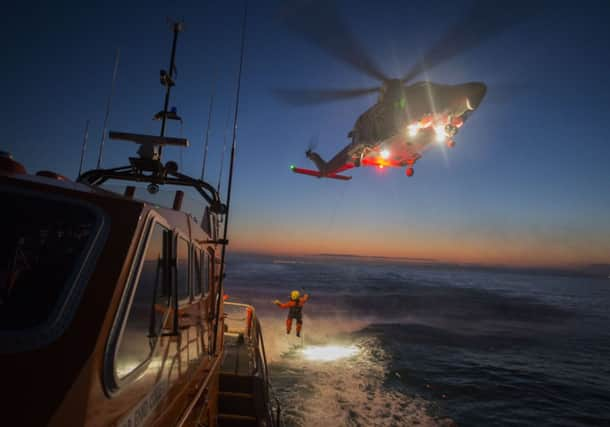Night exercise with helicopter and lifeboat crew


Sadly, the current rules and regulations are forcing many to take risks by going to sea in inclement weather and further, to earn a living.
The public take it for granted when they purchase fish. The national press do not give enough coverage of fishermen’s hardships, other than when there is any incident at sea involving a lost fishing boat.
Advertisement
Hide AdAdvertisement
Hide AdSafety at sea is of the utmost importance. The industry considers this when developing new boats, and this is supported by the RNLI and MCA along with the Fisherman’s main charities.
Every time a lifeboat is launched or a SAR helicopter takes to the air, the crews have to be able to prepare for the worst and that is why exercises are so important. We must not forget that lifeboat crews are made up mostly of volunteers who have normal jobs.
Recently we joined Shoreham Harbour lifeboat on a night exercise to see first-hand how crews prepare for such an incident. Technology has changed and the Shoreham Tamar all-weather lifeboat has state-of-the-art equipment to deal with such incidents. It is a proven and fast boat travelling with 2000hp engines up to a speed of 25 knots.
Launching from the boathouse Steve Smith the coxswain positioned Enid Collett several miles off the Shoreham coast. Radio procedure is very important when working with helicopters and a casualty. Valuable time can be saved. If a vessel is lost, sectored searches take place to try and locate those in the water.
Advertisement
Hide AdAdvertisement
Hide AdIt was not long before H104 the Westland Augusta 139 medium twin engine helicopter appeared, having taken off from Lee on Solent.
Steve Smith said: “We really have to make the most of these exercises, as they are not a regular occurrence. Lee is currently the busiest Maritime SAR helicopter in the UK and it is not uncommon for exercises to be cancelled at the last minute due to a shout.”
Mark Blatcher, the Shoreham lifeboat mechanic, works with Simon Tugwell, the second cox, to get those on board involved in the exercise, which can include several incidents.
“Our training now, is to get as many crew members acceptable for the all-weather lifeboat. With an inshore lifeboat we are a busy station, especially in the summer. First hand opportunities such as this must be taken,” both said.
Advertisement
Hide AdAdvertisement
Hide AdThe helicopter arrived out of the dark and positioned itself very low over the Tamar dropping its winchman onto the deck. A brief discussion relating to the exercise was agreed, and the first crew member was winched up. This was followed by a medi-vac in a stretcher along with a search for a casualty in the water.
While this was happening Steve was at the helm keeping a steady track at a fast speed, with the helicopter to the stern whilst in radio communication to the pilot.
“Safety is of the utmost importance for all involved, and the relevant protective gear is now standard. It was calm tonight! However, it puts things into a different perspective when we are out in a force +9. That is why we do these exercise to the book,” said Steve.
Once over, Enid Collett returned to the boathouse. A crew briefing and the all-important thank you to the helicopter crew for their help was followed by a wash down of the lifeboat, fuel checks and a reassuring ‘We are now ready for service’ to the coastguard.
Advertisement
Hide AdAdvertisement
Hide AdOur fishermen, often at sea when others are not, need to know that these services are there to help them when needed. The national press does at times have to report the sad outcome of incidents; but seeing first-hand how The RNLI and MCA work together it proves how important such joint exercises are.